Mahdi Maktab Dar Oghaz
A Comparison of Embedded Deep Learning Methods for Person Detection
Jan 08, 2019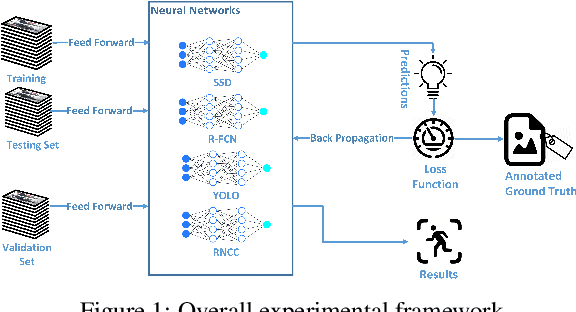
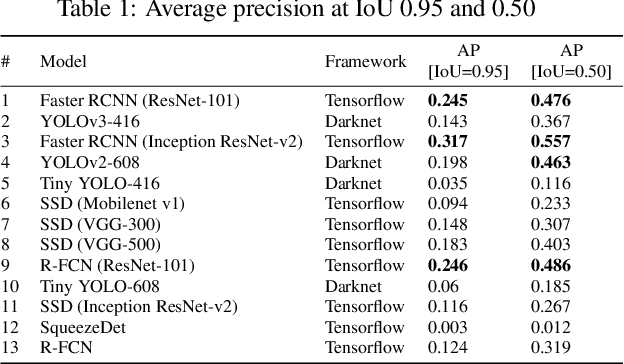
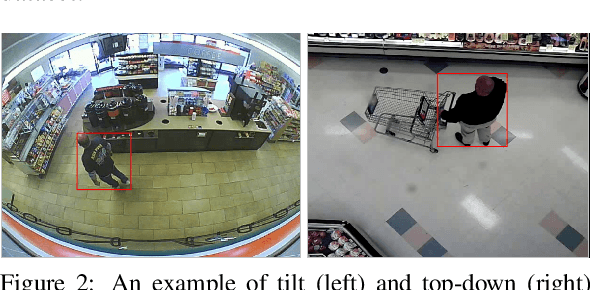

Abstract:Recent advancements in parallel computing, GPU technology and deep learning provide a new platform for complex image processing tasks such as person detection to flourish. Person detection is fundamental preliminary operation for several high level computer vision tasks. One industry that can significantly benefit from person detection is retail. In recent years, various studies attempt to find an optimal solution for person detection using neural networks and deep learning. This study conducts a comparison among the state of the art deep learning base object detector with the focus on person detection performance in indoor environments. Performance of various implementations of YOLO, SSD, RCNN, R-FCN and SqueezeDet have been assessed using our in-house proprietary dataset which consists of over 10 thousands indoor images captured form shopping malls, retails and stores. Experimental results indicate that, Tiny YOLO-416 and SSD (VGG-300) are the fastest and Faster-RCNN (Inception ResNet-v2) and R-FCN (ResNet-101) are the most accurate detectors investigated in this study. Further analysis shows that YOLO v3-416 delivers relatively accurate result in a reasonable amount of time, which makes it an ideal model for person detection in embedded platforms.
Features Extraction Based on an Origami Representation of 3D Landmarks
Dec 12, 2018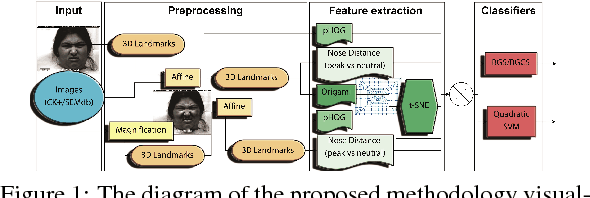
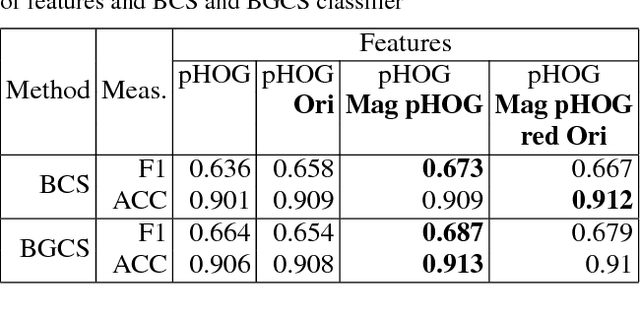
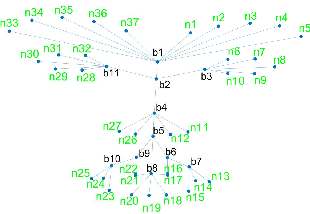
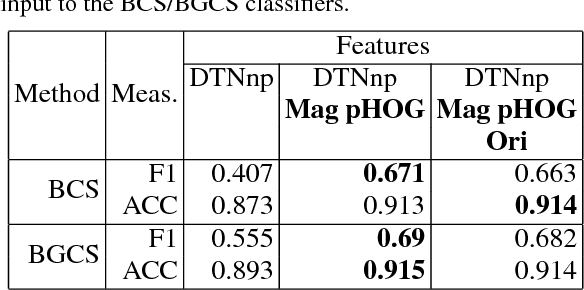
Abstract:Feature extraction analysis has been widely investigated during the last decades in computer vision community due to the large range of possible applications. Significant work has been done in order to improve the performance of the emotion detection methods. Classification algorithms have been refined, novel preprocessing techniques have been applied and novel representations from images and videos have been introduced. In this paper, we propose a preprocessing method and a novel facial landmarks' representation aiming to improve the facial emotion detection accuracy. We apply our novel methodology on the extended Cohn-Kanade (CK+) dataset and other datasets for affect classification based on Action Units (AU). The performance evaluation demonstrates an improvement on facial emotion classification (accuracy and F1 score) that indicates the superiority of the proposed methodology.
 Add to Chrome
Add to Chrome Add to Firefox
Add to Firefox Add to Edge
Add to Edge